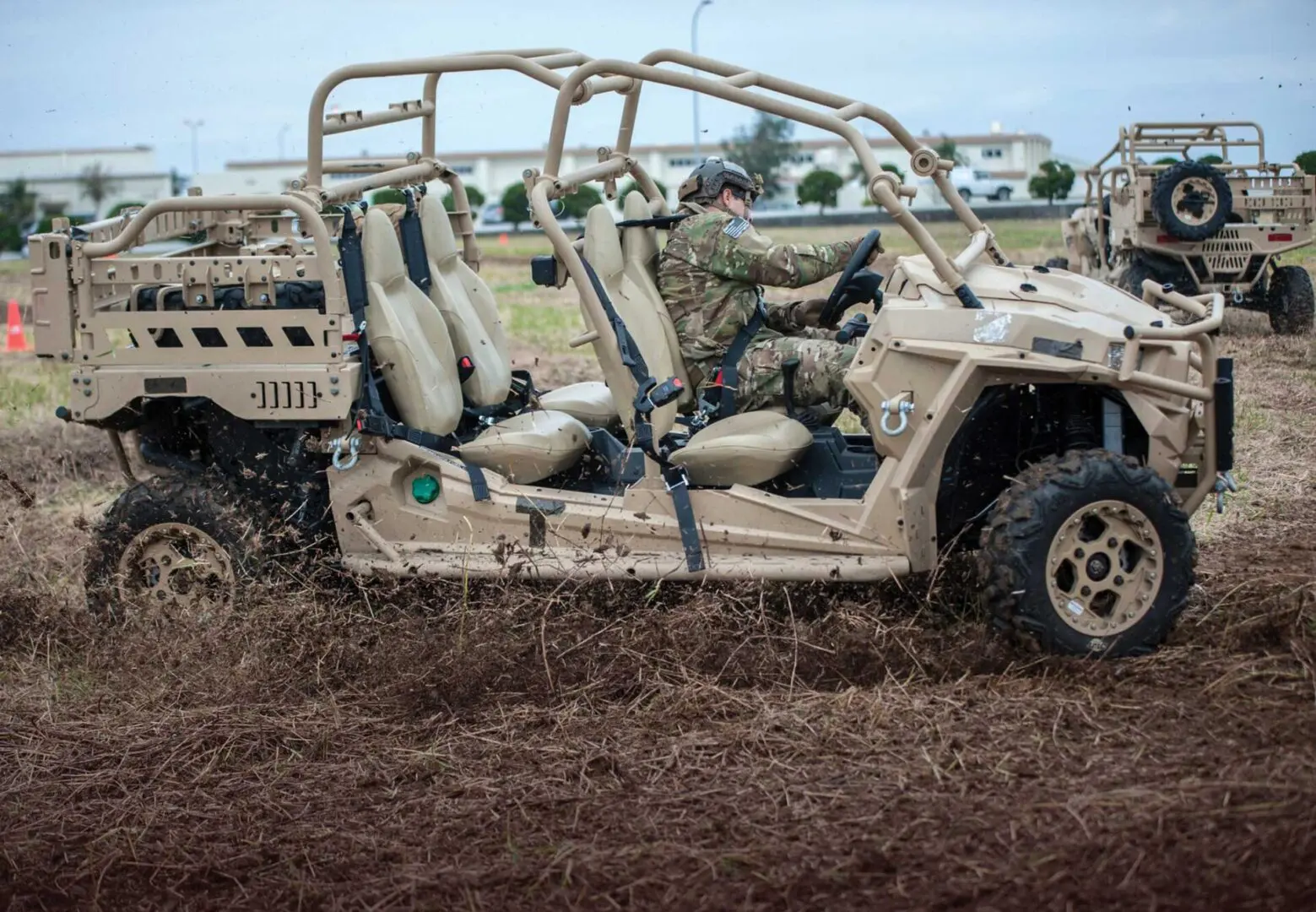Tactical Vehicle Safety
By SSGT LAUREN DOUGLAS, AIR FORCE SAFETY CENTER PUBLIC AFFAIRS
Department of the Air Force (DAF) personnel operate a wide variety of vehicles to execute our missions. Transportation professionals operating in land, air, space, and water domains must adhere to safe practices and strict standards.
A vehicle becomes a tactical vehicle, or military-designed vehicle, once it is designed for field requirements in combat, training personnel for tactical operations, or developed under military contract. Utility vehicles (UTVs) are versatile, all-terrain vehicles that come in different models and sizes and can handle various tasks and terrains. All-terrain vehicles (ATVs) and UTVs are both off-road vehicles but have different capacities and features. ATVs seat one, are designed for off-road excursions, and offer a wider range of uses, while UTVs seat up to six, are designed with more advanced on-road features, and are more stable and comfortable.
“Tactical vehicle safety is highly important because it’s part of the full readiness picture,” said Michael E. Eckert, Traffic and Safety Outreach Manager for the Air Force Safety Center. “Reducing tactical vehicle mishaps helps increase DAF readiness for both personnel and equipment.”
As the Traffic and Safety Outreach Branch Chief, Eckert is responsible for providing guidance, oversight, and recommendations to avoid and prevent mishaps caused by human error. His branch also reviews tactical vehicle lesson plans for best instruction and training.
According to the Department of Defense, a mishap is an unplanned event or series of events that result in damage to DoD property or public property. This includes illness or injury to military, civilian, or non-DoD personnel caused by DoD activities.
In fiscal year 2023, there were twenty reported tactical vehicle mishaps resulting in forty-nine injuries and one fatality. In the previous year, FY 2022, there were twenty-six mishaps on record with twenty-four injuries and no fatalities. Following all safety guidelines and wearing manufacturer-recommended personal protective equipment while driving off-road vehicles can reduce or eliminate injuries or death.
DoD Motor Vehicle and Traffic Safety instructions state that operators must adhere to the manufacturers’ personal protective equipment (PPE) and operating recommendations, as well as federal, state, or host-nation regulations when operating on public roadways, if they do not meet the design requirements for public roadway use. (DODMVTS Requirement 3.1.c and DAFI 91-207, 5.2)
PPE for vehicle safety may include helmets, eye protection, foot protection, protective clothing, and extremity/joint protection. Some PPE also demands extended requirements that include standards and markings that mandate labels and identifiers. Seatbelts are also crucial on UTVs. Harness-style seatbelts can provide better restraint during aggressive riding or in a mishap, enhancing passenger safety.
For vehicle PPE specification, recalls, and operational mandates, visit the Driving Off-Road Vehicle Safety page.
In addition to formal training, there are operational checklists and templates for the use of vehicles. Some instructions outline guidance for every use, while other instructions are for less frequent or specialized use. Consistently following operating instructions reduces risk of mishaps and creates a safer environment for all.
“We have seen a twenty-three percent decrease in mishaps involving tactical vehicles but an increase in minor injuries,” said Eckert. “The increase in injuries appears to be from a few multiple vehicle mishaps that occurred during convoy operations.”
Safety is everyone’s responsibility. Remain vigilant, especially when near or operating tactical vehicles. Follow precise instructions and trainings to ensure excellent outcomes for all.
FOR MORE INFORMATION
https://www.esd.whs.mil/Portals/54/Documents/DD/issuances/dodi/605504p.pdf


